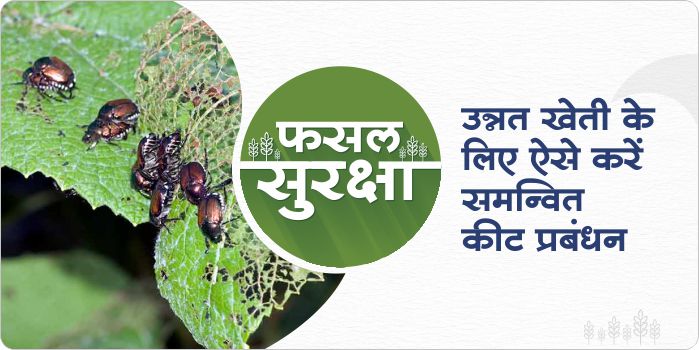- In watermelon crops it is very necessary to supply fertilizer after plowing and before sowing the field.
- The management of fertilizers allows the nutrient supply for the watermelon crop to germinate easily.
- Fertilizer use before sowing DAP @ 50 kg/acre + SSP @ 75 kg/acre + potash @ 75 kg/acre + zinc sulfate @ 10 kg/acre + Magnesium sulfate @ 10 kg/acre
- With this, farmers can also use watermelon samridhi kit as a soil treatment.
Weed of fields will be removed easily by this manual weed dispenser
- Weeds are a big problem for every crop
- Using a weed dispenser to get the weeds out of the field is of great benefit.
- It is a hook type manual device that destroys weeds between crop rows.
- It has a roller consisting of two discs fitted by an iron rod. small rhombus shaped hooks are attached to the rod.
- The roller of this device is made of soft iron.
Registration for sale on MSP of Rabi crops will start on this day
In Madhya Pradesh, the process of registration for the sale of wheat and other rabi crops at the MSP is going to start. This process will start from January 25. This process has already been started in the state of Haryana.
Explain that minimum support prices are issued by the Central Government for 23 Kharif and Rabi crops every year. Under this, Rabi crops like wheat 1975 Rupees per quintal, barley 1600 Rupees per quintal, gram 5100 Rupees per quintal, lentils 5100 Rupees per quintal, rapeseed and mustard 4650 Rupees per quintal and safflower 5327 Rupees per quintal have been released for the year 2021-22.
Source: Kisan Samadhan
ShareThese farmer families will not get the benefit of PM Kisan Yojana
Recently, under the Pradhan Mantri Kisan Samman Nidhi Scheme, the seventh installment has been sent to the bank account of the farmers. Crores of farmers of the country are benefiting from this scheme. However, in spite of this there are some such farmer families, who may not get the benefit of this scheme.
Who will not get the benefit of the scheme?
- Institutional farmers will not get the benefit.
- A person who has held a constitutional post will not get the benefit.
- A serving or retired employee of the State Government, Central Government, Public Sector Company, Government Autonomous Organization etc. will not get the benefit. This excludes multi-tasking, group D and fourth-class employees.
- Even people who have filed income tax in the last assessment year cannot avail of it.
- Doctors, engineers, lawyers, chartered accountants and registered organizations with professional organizations also cannot avail of this.
Source: Jagran
ShareThese were the top ten farmers on the first day of Gramophone photo contest
‘Mera Gaon Mera Abhiman’ photo contest started on Gramophone Krishi Mitra app from yesterday i.e. January 22. On the very first day thousands of farmers took part in this competition and posted pictures of their village and got their friends to like it.
Top Ten farmers on January 22
- Shivshankar Yadav
- Satish mewada
- Motilal Patidar
- Sandeep Raghuvanshi
- Dharam Kannoj
- Kamal Krishna Mali
- Prakash Patidar
- Ashok Patidar
- Princu
- Preetesh goel
Significantly, there are still nine more days left in this ten-day competition. That’s why take part in it and win attractive prizes.
The winners in this competition will be selected based on the number of likes on the photographs posted in the village. In this 10-day competition, a contestant who gets the most likes on their pictures every two days will get a prize and along with this, the top farmers will get bumper prizes at the end of the ten-day competition.
*terms and Conditions apply
ShareWhat is Integrated insect management
-
- Integrated pest management means control of insects without harming crops.
- Beneficial insects can be identified under integrated pest management and measures can be taken for their protection
- Before pests attacks, try to control them and use chemicals interchangeably.
- Integrated pest management can be done by applying organic products such as pheromone traps .
Share
How to properly manage farm waste
- The more type of crops are planted in the field, the more variety of garbage comes out of the field
- It is very important to properly manage farm waste
- Collect the garbage scattered in the field in one place
- waste from weeds containing its seeds should be taken away from the field
- Collect the residues of crops in one corner of the field.
- Keep aside waste usable as animal fodder.
- Nowadays there are many products available in the market which can be used to convert such waste into manure.
Government will give 50% subsidy to open fish retail outlet
If you want to open a fish retail outlet but you do not have money for it, then you do not have to be disappointed now. In fact, with the help of the central government, the Madhya Pradesh government is giving a 50% subsidy to farmers for opening fish retail outlets.
All the residents of Madhya Pradesh can get this subsidy, although priority will be given to Scheduled Tribe, Scheduled Castes, Women and unemployed youth. There must be 100 square feet of space to open an outlet. After opening the outlet, the beneficiary will be responsible for its maintenance.
Explain that it costs about 10 lakh rupees to open a fish outlet. The government will give half of this entire amount i.e. 50% as subsidy and the remaining expenditure will have to be spent by the beneficiary himself. To get other information related to this scheme, you can visit the agriculture department of your district or the regional agriculture department.
Source: Krishi Jagran
ShareTemperature will increase in these states including MP, know weather forecast
In the states of Central India, the northern winds will reduce in the next few days due to which the temperature may increase. Apart from this, there is a possibility of rains in the hilly and plains of North India before Republic Day. From January 26, most parts of the country are expected to have a clean and dry season.
Video Source: Skymet Weather
ShareWhat is Integrated Plant management
- Integrated plant management means managing plants properly without harming them.
- Under integrated plant management, care is taken to ensure that there is no harm to the insects, which is beneficial for the crop by the use of any chemical.
- Select pest resistant and disease resistant varieties for sowing.
- Sow the crop by adopting the crop cycle, avoid sowing the crops of the same family in the same field.
- Sow the field by plowing the field properly and with seed treatment and soil treatment.










